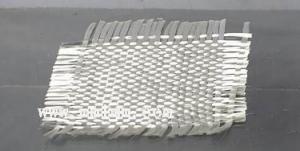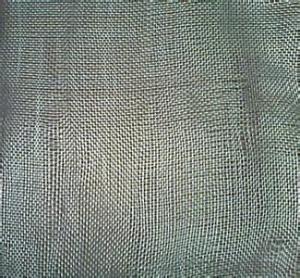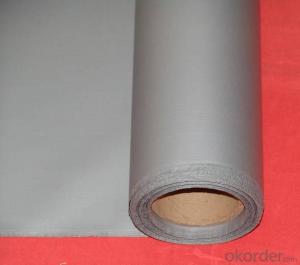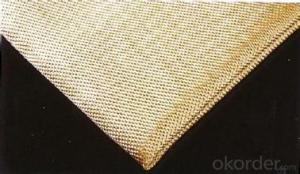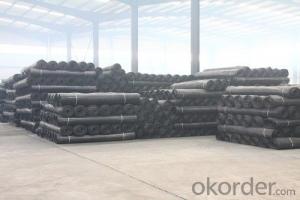Hisilica fiber cloth 2014
- Loading Port:
- China Main Port
- Payment Terms:
- TT OR LC
- Min Order Qty:
- -
- Supply Capability:
- -
OKorder Service Pledge
Quality Product, Order Online Tracking, Timely Delivery
OKorder Financial Service
Credit Rating, Credit Services, Credit Purchasing
You Might Also Like
Quick Details
| Place of Origin: | Brand Name: | Model Number: | |||
| Weight: | Width: | Yarn Type: | |||
| Alkali Content: | Standing Temperature: | Weave: | |||
| Available treatmetn: |
Packaging & Delivery
| Packaging Detail: | Cartons |
| Delivery Detail: | 15-20days |
Specifications
Working temp.:2000F(1100C)
Width: 910mm
Thickness:0.65/1.2/1.35mm
Application:Heat preservation,firefighting,filtration
- Q:Can fiberglass fabric be easily cut and sewn?
- Yes, fiberglass fabric can be easily cut and sewn. Due to its relatively lightweight and flexible nature, fiberglass fabric can be cut using regular scissors or a utility knife. However, it is important to wear protective gloves and a mask while cutting fiberglass fabric to avoid any irritation or inhalation of particles. When it comes to sewing, fiberglass fabric can be sewn using a regular sewing machine or by hand with a heavy-duty needle and strong thread. It is advisable to use a longer stitch length and to go slowly while sewing fiberglass fabric to prevent any damage to the fabric or the sewing machine. Overall, with the right precautions and tools, cutting and sewing fiberglass fabric can be done easily.
- Q:What is Teflon?
- As Tie Fulong, Teflon, Teflon, Teflon and so on (all Teflon transliteration). Teflon (Tie Fulong) coating is a kind of high performance coating is the one and only, with heat resistance, chemical inertness and excellent insulation stability and low friction, the comprehensive advantages with other coatings can not compete, the flexibility makes it can be used in almost all the shape and size of the products.
- Q:How does fiberglass fabric perform in flexural strength?
- Fiberglass fabric generally exhibits excellent flexural strength due to its inherent properties, such as high tensile strength and rigidity. It can withstand bending or flexing without significant deformation or failure, making it a suitable material for applications that require structural integrity and resistance to bending forces.
- Q:Is fiberglass fabric resistant to insects?
- Generally, insects are not attracted to or able to consume fiberglass fabric. It is made from woven strands of glass fibers, which do not appeal to insects. Moreover, fiberglass fabric does not create a suitable environment for insects to nest or breed because it is non-porous and does not retain moisture. As a result, it is a popular choice for insect screens and protective covers since it effectively keeps insects out without the need for chemical insecticides. However, it is essential to note that although fiberglass fabric itself resists insects, insects may still find their way through the seams and openings in the fabric. Consequently, proper installation and maintenance are crucial for ensuring complete insect resistance.
- Q:How is fiberglass fabric used in the aerospace industry?
- Fiberglass fabric is commonly used in the aerospace industry for its lightweight and high-strength properties. It is used to reinforce various components such as aircraft wings, fuselage panels, and interior parts. The fabric is typically impregnated with resin and then molded or laminated to create strong, durable structures. Additionally, fiberglass fabric is also utilized in the production of heat shields and insulation materials to protect against extreme temperatures encountered during space travel.
- Q:What is waterproof, one cloth, four coated?
- One cloth, four coating is a waterproof construction process, that is, a glass cloth, four times brushing cement based waterproof coating.
- Q:How do fiberglass fabrics perform in terms of thermal conductivity?
- Fiberglass fabrics generally have low thermal conductivity, which means they are effective in preventing the transfer of heat. The unique composition of fiberglass, consisting of fine glass fibers, creates a barrier that minimizes the movement of thermal energy. This characteristic makes fiberglass fabrics suitable for various applications where thermal insulation is required. Whether used in building construction, automotive insulation, or even protective clothing, fiberglass fabrics excel in reducing heat transfer and maintaining temperature stability. Additionally, their low thermal conductivity contributes to energy efficiency by minimizing heat loss or gain, leading to lower energy consumption and cost savings.
- Q:Can fiberglass fabric be used for insulation in cryogenic applications?
- Fiberglass fabric is suitable for insulation in cryogenic applications because of its exceptional insulating properties. These properties enable it to effectively trap air pockets within its structure, reducing heat transfer. Consequently, it is ideal for maintaining extremely low temperatures in cryogenic environments. Moreover, fiberglass is a non-flammable material that plays a crucial role in ensuring safety in cryogenic settings. Its resistance to moisture and chemicals further enhances its suitability for cryogenic insulation. Nevertheless, it is vital to carefully choose the specific type of fiberglass fabric for cryogenic applications. There are various grades and thicknesses available, and the selection should be based on the specific requirements of the cryogenic application to achieve optimal insulation performance. In conclusion, fiberglass fabric's excellent insulating properties, non-flammability, and resistance to moisture and chemicals make it suitable for insulation in cryogenic applications. However, it is essential to select the appropriate type of fiberglass fabric to ensure optimal insulation performance in cryogenic environments.
- Q:How is fiberglass fabric used in the production of soundproof curtains?
- Due to its exceptional acoustic properties, fiberglass fabric is frequently utilized in the manufacturing of soundproof curtains. This fabric is composed of woven glass fibers, which are highly proficient at absorbing and dampening sound waves. During the production process, layers of fiberglass fabric are typically placed between other fabric materials, resulting in a multi-layered curtain. These layers collaborate to effectively obstruct and absorb sound, creating a barrier that aids in reducing noise transmission through windows or doors. The utilization of fiberglass fabric in soundproof curtains provides several advantages. Firstly, fiberglass is a lightweight material, making the curtains easy to handle and install. Additionally, fiberglass possesses a high tensile strength, guaranteeing that the curtains remain durable and long-lasting. Furthermore, the fibers within the fiberglass fabric are engineered to trap and absorb sound waves, transforming them into heat energy. This property of acoustic absorption assists in diminishing echo and reverberation within a room, ultimately generating a quieter and more comfortable environment. Moreover, fiberglass fabric is resistant to moisture, mold, and mildew, rendering it suitable for a variety of settings, including residential, commercial, and industrial spaces. It is also fire-resistant, providing an additional layer of safety to soundproof curtains. In conclusion, fiberglass fabric plays a vital role in enhancing the capacity of soundproof curtains to effectively block and absorb sound waves. The combination of its acoustic properties, durability, and resistance to various environmental factors establishes fiberglass fabric as an ideal choice for the creation of soundproofing solutions.
- Q:Is fiberglass fabric resistant to chemicals used in wastewater treatment?
- Fiberglass fabric exhibits remarkable resistance to the chemicals employed in wastewater treatment. Its outstanding chemical resistance has earned fiberglass a reputation as an optimal material for scenarios where exposure to diverse chemicals is probable. It has the capacity to endure a broad spectrum of corrosive substances, such as acids, alkalis, and solvents, commonly encountered in wastewater treatment processes. Due to the non-reactive quality of fiberglass fabric, it remains unaffected and undamaged when exposed to these chemicals, making it a dependable choice for implementation in wastewater treatment facilities. Additionally, fiberglass fabric also offers resistance to UV radiation, moisture, and fluctuations in temperature, which further bolsters its durability and suitability for such environments.
1. Manufacturer Overview |
|
|---|---|
| Location | |
| Year Established | |
| Annual Output Value | |
| Main Markets | |
| Company Certifications | |
2. Manufacturer Certificates |
|
|---|---|
| a) Certification Name | |
| Range | |
| Reference | |
| Validity Period | |
3. Manufacturer Capability |
|
|---|---|
| a)Trade Capacity | |
| Nearest Port | |
| Export Percentage | |
| No.of Employees in Trade Department | |
| Language Spoken: | |
| b)Factory Information | |
| Factory Size: | |
| No. of Production Lines | |
| Contract Manufacturing | |
| Product Price Range | |
Send your message to us
Hisilica fiber cloth 2014
- Loading Port:
- China Main Port
- Payment Terms:
- TT OR LC
- Min Order Qty:
- -
- Supply Capability:
- -
OKorder Service Pledge
Quality Product, Order Online Tracking, Timely Delivery
OKorder Financial Service
Credit Rating, Credit Services, Credit Purchasing
Similar products
New products
Hot products
Hot Searches
Related keywords
